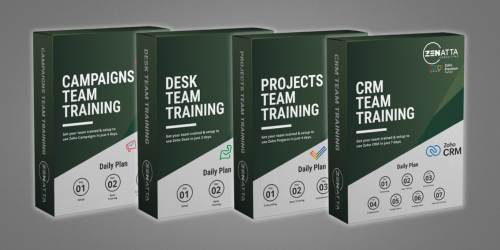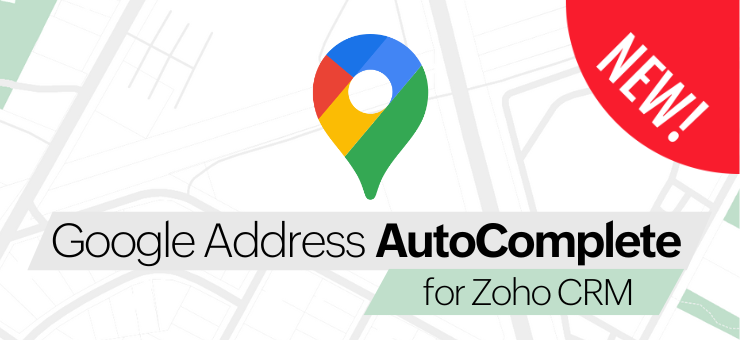Zoho Tables is a flexible app designed to help teams manage data in a structured, spreadsheet-style format—without the need for complex development. In this tutorial, we walk you through the essentials of using Zoho Tables to organize projects, build custom views, link related records, and automate common workflows.
What Is Zoho Tables?
Zoho Tables is a lightweight data management platform that blends the familiarity of spreadsheets with the structure and flexibility of a database. You can build custom tables, create visual views, link related information, and automate actions—no coding required.
It’s ideal for use cases like:
- Project and task tracking
- Sales and CRM pipelines
- HR databases
- Event planning
- Inventory and invoice management
Key Features Highlighted in the Video
1. Creating a Base
- A Base is the central workspace that contains your related tables.
- You can give it a name, assign a color and icon, and begin building out tables underneath it.
2. Building Tables with Custom Fields
- Tables are made up of columns with different field types, including:
- Text, numbers, dates
- Dropdowns (single or multi-select)
- Lookups to other tables
- Attachments
- You can add, edit, remove, or reorder columns with ease.
- Example: A “Tasks” table with fields like Task Name, Assignee, Status, Due Date, and Priority.
3. Filtering and Sorting Data
- Apply filters to narrow down records by specific criteria, such as:
- Tasks marked as “In Progress”
- Items that are both “To Do” and “High Priority”
- Combine multiple filters using AND/OR logic and save them for future use.
Exploring Different Views
Zoho Tables supports multiple views so you can display your data in the format that best fits your workflow.
4. List and Kanban Views
- List View is a traditional spreadsheet-style layout.
- Kanban View allows you to group data by fields like Status or Assignee, making drag-and-drop task management easy.
5. Calendar and Gallery Views
- Calendar View displays your records based on a date field, such as a due date or event deadline.
- Gallery View showcases records in a visual card format—ideal for image-driven content like product catalogs or invoices.
6. Form View
- Build simple, shareable data entry forms that populate directly into your tables.
- Useful for collecting information from teammates, clients, or leads.
Creating Relationships Between Tables
Zoho Tables makes it easy to connect records across different tables.
7. Example: Tasks and Milestones
- Create a separate “Milestones” table with fields for name, status, and target date.
- Link tasks to milestones using a Link to Table field, enabling two-way relationships.
- View all tasks associated with a milestone, or jump from a task back to its related milestone.
This layered setup helps you manage complex projects without losing track of how each part connects.
Using Templates for Quick Setup
Zoho Tables includes a wide range of ready-to-use templates tailored to different business needs:
- Project Tracker
- Marketing Campaigns
- Client CRM
- Product Inventory
- HR and Onboarding
8. Project Tracker Template
In the walkthrough, the Project Tracker template includes:
- Clients (List View)
- Projects (List View)
- Work Items (Kanban View)
- Invoices (Gallery View)
This structure can be used as-is or fully customized to fit your organization’s specific process.
Automating Your Workflow
Automation is one of the most powerful features of Zoho Tables.
9. Automation Example: Invoice Payment Alert
- Trigger: When a record is updated
- Condition: Payment Status = “Received”
- Action:
- Send an email notification
- Update the related project’s status to “Paid”
Automation can be configured through a simple interface—no scripting required. Just choose your trigger, define your condition, and assign the actions you want the system to take.
? Tip: Use conditions like matching project IDs to ensure updates only apply to the correct records.
Final Thoughts: Why Use Zoho Tables?
Zoho Tables provides a powerful yet easy-to-use platform for organizing and tracking business data. It’s ideal for teams looking to simplify internal processes without investing in custom app development.
Key Benefits:
- Familiar spreadsheet-style UI with advanced capabilities
- Custom views for flexible data visualization
- Built-in automations for reducing manual work
- Easy setup using templates and drag-and-drop tools
- Seamless linking of related information
FAQs
Q: Can I integrate Zoho Tables with other Zoho apps?
Integrations are available and continue to expand. Zoho Tables works well as part of a broader Zoho ecosystem.
Q: Can I import data from spreadsheets?
Yes. CSV and Excel imports are supported for fast migration into Zoho Tables.
Q: Does it support external forms?
Yes. Form Views allow you to collect external submissions that go straight into your tables.
Q: What’s the difference between Zoho Tables and Zoho Creator?
Zoho Tables is designed for simpler use cases. If you need custom interfaces, workflows, or scripting, Zoho Creator is more appropriate.
Conclusion
Zoho Tables is a great option for teams who want to manage structured data visually, collaboratively, and efficiently. Whether you’re tracking tasks, organizing client projects, or building out internal workflows, the flexibility of Zoho Tables makes it easy to get started and scale your setup as needed.





